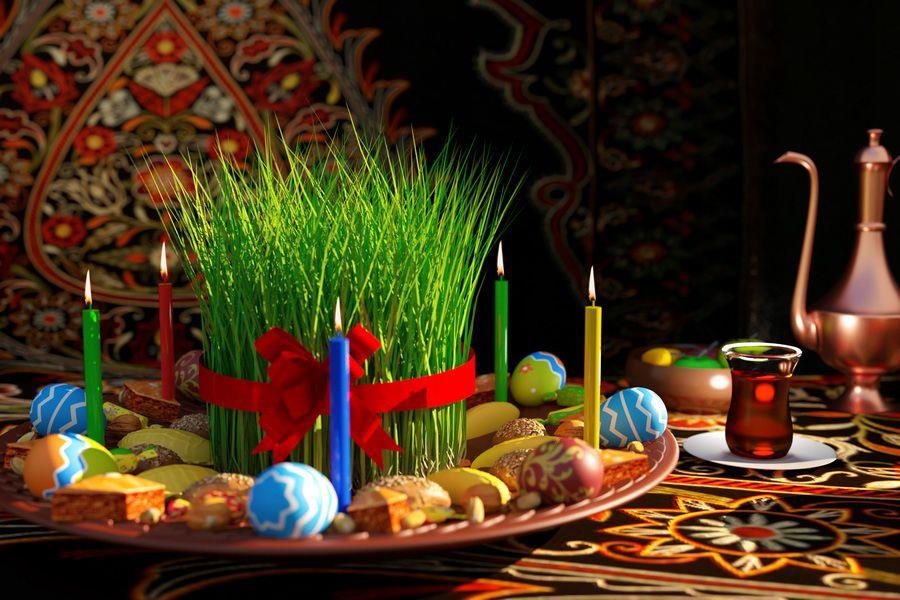
March 21 Marks Novruz, Gift That Preserved For Centuries
UN Secretary General Antonio Guterres addressed the public on the occasion of International Novruz Day. The appeal mentions that Nowruz is a holiday of new beginnings - the beginning of a new year, the arrival of spring and the awakening of nature. It is said that this holiday brings together millions of people from different generations and nationalities. Novruz promotes dialogue, good neighborliness and reconciliation in the current period of difficult trials. It is noted that Novruz helps to strengthen the goals and values of the UN, such as peace, human rights and dignity.
Novruz, which means "new day", is accepted as the beginning of the new year according to an ancient belief. This holiday has been celebrated for three thousand years in the Caucasus, the Balkans, the Black Sea basin, Central Asia, the Middle East and other regions.
From myths to historical and literary sources, various information about Novruz being an ancient folk holiday can be found. Novruz was the most interesting of the holidays celebrated during Zoroastrianism. Information about this ancient holiday can also be found in Nizamulmulk's "Policy Letter". Omar Khayyam (1048-1131) in his work "Novruzname" scientifically showed that the creation of Nowruz is related to the solar calendar based on astronomical research.
Jean Chardin, a French traveler who lived in the 17th century, visited Ganja, Nakhchivan, Tiflis, Yerevan, Tabriz, and Isfahan during his trip to Eastern countries. After returning to his homeland, he wrote a book called "Travel Note". It is interesting that since one of his visits fell in March, he witnessed the Nowruz holiday celebrated in Azerbaijan. Regarding that holiday, he wrote in "Travel" that the Safavids had many religious and civil holidays.
Besides, day and night are equal on that day. What surprised the traveler was the fact that eggs were dyed with gold water and people gave each other gifts of rare and expensive things - gold, silver, cloth, perfume, and gems. The continuation of this kind of celebration from the farmer to the king surprised the European traveler even more. Jan Sharden was especially fascinated by the Nowruz holiday held in Beylarbey district of Yerevan. One of the factors that surprised him was that people prayed to God on the first day of Eid. The traveler wrote: "They wash their whole bodies with water at dawn." Then they wear clean clothes, speak nice words, and are kind to each other. This song makes them believe that the New Year will pass well and bring happiness."
In the Middle Ages in Azerbaijan, astrologers used to follow the movement of the Sun and inform the population about it. In 1637, the German traveler Adam Oleari witnessed how the Azerbaijanis celebrated the New Year ceremony - Novruz in Shamakhi and wrote about it: "The astrologer often stands behind the table, observes the Sun using special instruments, and observes the moment when the Sun reaches the equinox point of day and night. As soon as the expected moment arrived, volleys were fired in the city due to the news of the astrologer. Drums were beaten along the fortress walls of Shamakhi city, people started celebrating."
Thus, Novruz is celebrated as a symbol of the beginning of the new calendar, as well as being a traditional holiday that has been preserved until today from an era of ancient fire worship, paganism, belief in the sun and fire.
Some sources believe that it is based on scientific principles. The beginning of the new year on March 21 has been fully scientifically confirmed. Novruz is inextricably linked with the everyday life, traditions, lifestyle, thinking and intellectual level of our people. Nowruz has been passed from generation to generation, century to century as a national holiday and folk ceremony.
Legal Disclaimer:
MENAFN provides the
information “as is” without warranty of any kind. We do not accept
any responsibility or liability for the accuracy, content, images,
videos, licenses, completeness, legality, or reliability of the information
contained in this article. If you have any complaints or copyright
issues related to this article, kindly contact the provider above.


















Comments
No comment